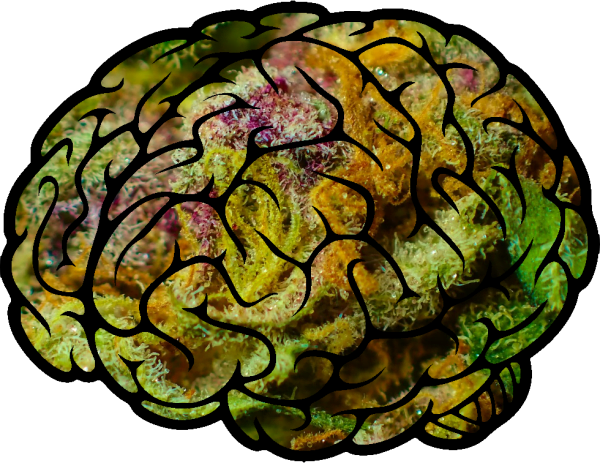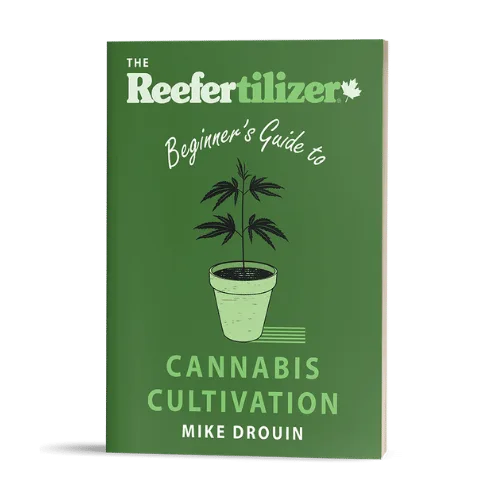There are over 100 different cannabinoids found in cannabis. THC is the one that is primarily responsible for the enjoyable “high” that many recreational users seek. But why exactly do we experience this feeling when we ingest cannabis?
Cannabis flower contains an inactive form of THC called THCA (tetrahydrocannabinolic acid). When THCA is heated above 120? it will trigger decarboxylation and become active THC. The same process happens when we smoke cannabis flower.

The famous THC molecule everyone is talking about.
There have been a handful of misconceptions about the mechanism over the years, such as the oft-repeated idea that the high is simply a “flood of dopamine” that causes heightened senses, euphoria, and more.
This idea stems from the dopamine theory of addiction that has been used by many scientists studying addiction over the last several decades. However, in 2015, a systematic review of all the relevant published studies found that unlike with stimulants like cocaine or amphetamines, there is little evidence to suggest that cannabis affects the release of dopamine or the chronic state of dopamine receptors.
What it does do is a bit more complicated. Let’s break it down.
Your Brain on THC
With all the varied effects that users report – euphoria, increased creativity, introspection, heightened physical sensations and altered perception – it would seem to make sense that THC doesn’t just act on the brain, but all throughout the body.

Research has determined that this is the case. THC mimics the effects of anandamide, an endocannabinoid molecule that is naturally produced by the human body. “Anandamide” takes its name from the Sanskrit “ananda,” which can be translated to “bliss”. This molecule activates cannabinoid receptors throughout the brain, spine, gut, lungs, liver, and more.
There are many endocannabinoids receptors found in the body, and there are also many plant-sourced phyto-cannabinoids to be found in cannabis. Aside from the fact that THC is one of the most prevalent cannabinoids found in the plant, it’s one of the most potent cannabinoids because of its extreme similarity to anandamide.
It just so happens that the THC molecule and the anandamide molecule are almost identical, so THC fits perfectly into anandamide’s cannabinoid receptors. Anandamide plays a role in regulating happiness, memory, motivation, pain, appetite, and more. When a molecule that is almost, but not quite the same plugs into the same receptors, each of those functions can be altered – usually in a way that most users find pleasant!
Modifiers
Of course, THC is only one part of the cannabis puzzle. THC has a strong effect on its own, but other cannabinoids and terpenes (plant-produced oils that give plants their signature smells) can make significant and noticeable changes to the effects of THC.
For example, CBD tends to reduce anxiety, and can take some of the “edge” off of a racy or uncomfortable high by opposing THC in some ways. The terpene limonene can make a high more alert and creative, and myrcene can cause a strain to be more relaxing, with a heavier body high.
THC is the most well-known cannabinoid in cannabis, and it’s the one that is largely responsible for the high. As researchers continue to study some of the other cannabinoids in more detail, we’ll know more about how they affect the human body. Happy growing and happy smoking!
Maximizing THC When Growing Cannabis
Cannabis buds are chock full of THC and other cannabinoids . Different factors will determine just how much THC by weight a plant can produce.
Genetics
The DNA of your cannabis plant is one of the biggest factors for the maximum potential of THC in your bud. Some strains are bred specifically to have as high as a value of THC as possible. Having a balance of THC and other canabinoids like CBD will produce a well-rounded “high” but some might prefer a strain rich in THC.
Light and Nutrients
Chlorophyll uses light energy to turn water and carbon dioxide into plant sugars called glucose. Nutrients provide the building blocks for these chemical reactions. This balance of light and nutrients is a major factor on how much your plant will grow. Providing lots of light and the right ratio of nutrients for plants in veg and flower will get you closer to maximizing the THC potential of you plants genetics.
Harvest Time
When you harvest your plants will have an affect on the total amount of THC available in the buds. Bud that is harvested too early won’t be as potent since the flowers are still immature. Give you plant enough time to fully mature and for buds to fully form. On the other hand harvesting too late will cause a loss in potency as the THC begins to degrade. Finding the right time to harvest cannabis will depend on the particular grow.
If you want to learn even more about growing good cannabis, we offer a free 40+ page guide full of images.
Now available on Amazon.
Sign up for our newsletter and download the digital copy today!

This guide will answer many questions about growing cannabis, like the following...
Selecting Seeds
Identify and Correct Problems
Maximize Yield
Much More...
Get a Chance to INSTANTLY WIN a Reefertilizer Nutrient Kit When You Sign Up.
Elijah Petty is a writer in the cannabis industry. He aims to use his platform to help educate people about cannabis and dispel some of the myths and misinformation that surround the plant.
